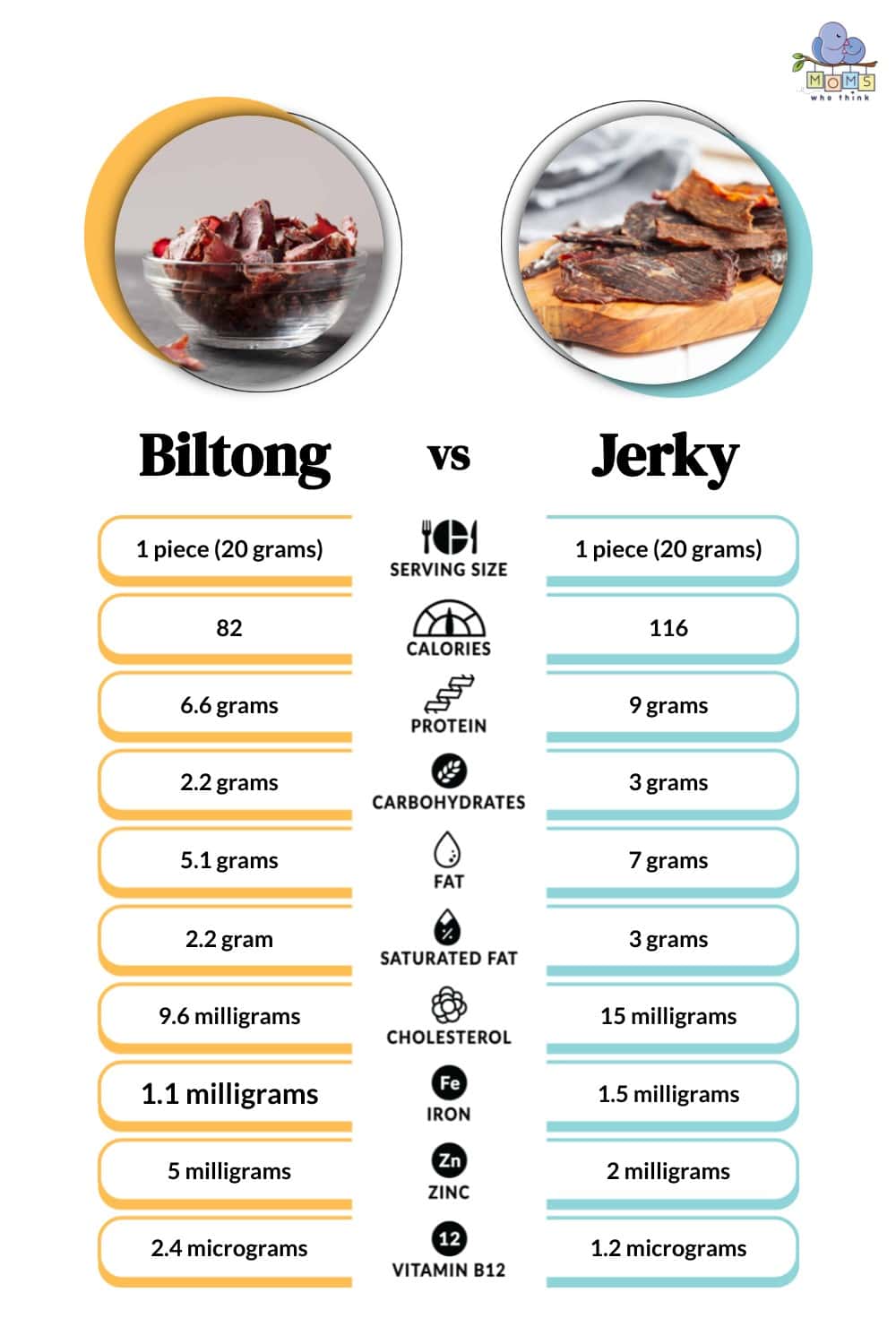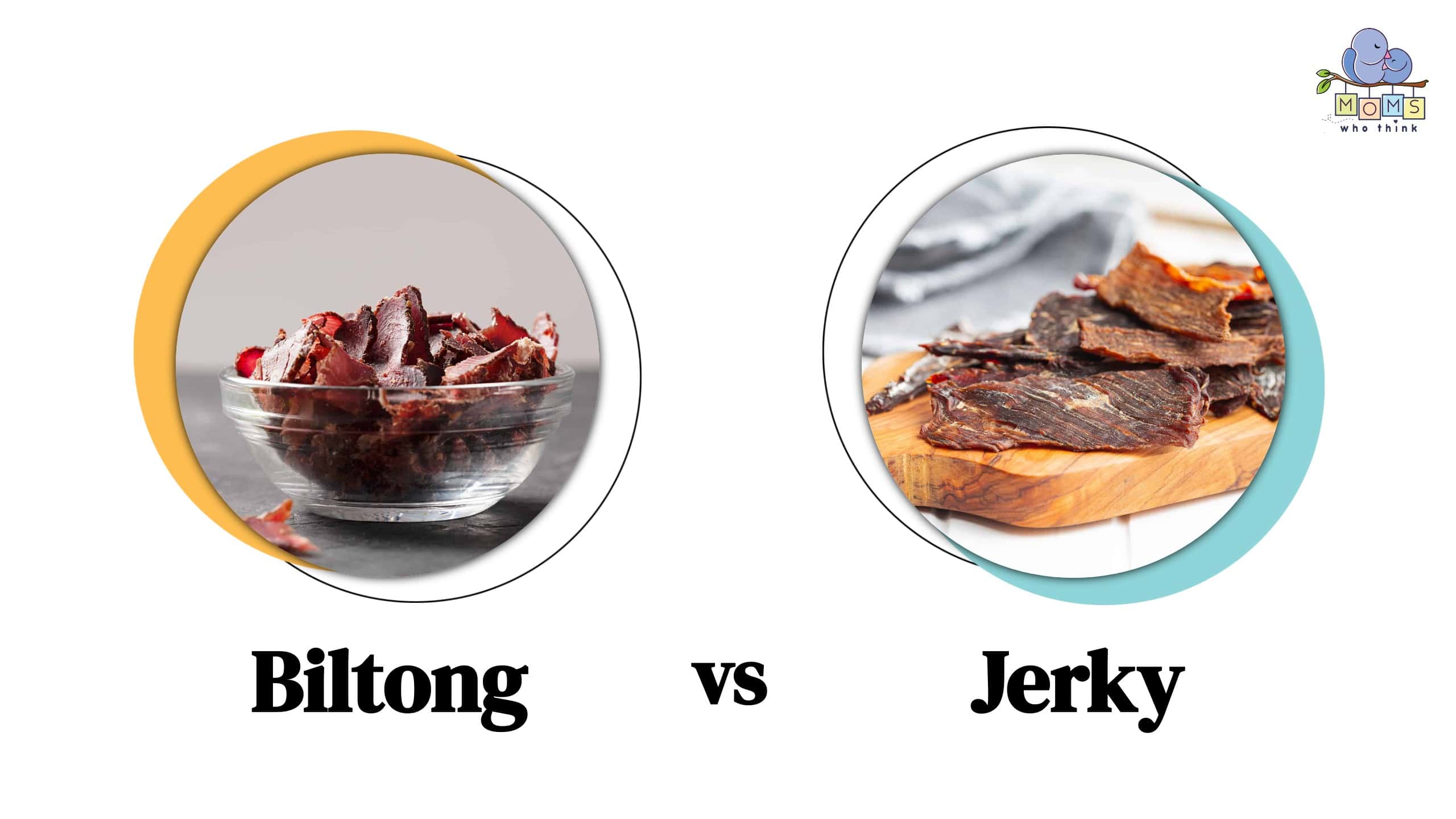It's time for beef jerky fans to get excited. There is another dried meaty snack on the market, South African biltong. Both jerky and biltong are dried salted meats ideal for hiking, camping, and just plain snacking. These two look almost identical, but when you dive in, you will see that despite their many similarities, they have some key differences.
Biltong vs. Jerky: Key Differences
For the uninitiated, biltong and jerky may seem like the same thing, and while they are both portable, high-protein snacks, they are actually two separate things. When it comes to biltong vs. jerky, there are four distinct differences that set each one apart: ingredients, taste, process, and texture.
Biltong is, at its essence, pure dried meat with savory spices that have been soaked in vinegar. The vinegar is the ingredient that sets it apart from jerky. Instead of vinegar, jerky relies on sugar. The sugar in jerky adds sweetness, while the vinegar in biltong gives it an acidic component as a secondary taste. For both, the savory, meaty taste is the first flavor to hit the tongue, but the undertones are where the different ingredients change the overall flavor.
The process for making biltong and jerky is different, too. Jerky is usually smoked to get the dry, dehydrated texture, and biltong is air-dried. Biltong is cured and then cut into wide strips, while jerky is cut first into thin strips and then cured. The size of the strips affects the texture, with biltong having thicker, meatier strips than jerky.
Biltong vs. Jerky: Nutritional Profile

If you are on the fence about which dried meat to choose, the nutritional profile might help you. Biltong has fewer calories than jerky, mainly because it does not have any sugar. But jerky is higher in protein. So, if you are searching for a high-protein snack, then jerky is a better choice. But if you are following a low-carb meal plan, then biltong is a better option because it has fewer carbs. But in all honesty, they are both pretty low in carbs, with only 2.2 grams of carbs for one 20-gram piece. The same amount of jerky has 3 grams of carbs. So the difference is fairly minimal, but if you are on keto, then you know every carb gram counts.
For those of us trying to choose healthy snacks, both biltong and jerky are decent choices. Biltong does have a slight lead since it is cured without heat, which keeps the nutrients intact. However, if you are watching your sodium intake, then you might want to skip both of these savory snacks because both are high in sodium. The American Heart Association recommends adults limit their sodium intake to no more than 2,300 grams per day, and both snacks make it easy to go over that limit.
What is Biltong?
Biltong originated in South African countries and is a staple in the market there. But it's still fairly new to the U.S. Biltong is traditionally made with beef, but chicken or wild game are also possibilities. The meat is soaked in a vinegar solution, then the salt and spices are added. Later, it is air-dried in one piece and then cut after it has dried. Traditionally, biltong is air-dried without any heat, but some makers are bucking that tradition and using a fan or oven to speed up the process.
While salt-dried meats were well established in South Africa, it's the Dutch settlers who introduced the addition of vinegar and spices to create the biltong that is known today. The name even comes from the Dutch language, where “bil” means rump and “tong” means tongue.
What is Jerky?
In the U.S., jerky will hands down win any popularity contest with biltong because it's still fairly new. Jerky has been a salty, chewy, meaty snack for a long time. We have the Quecha tribe in South America to thank for the creation of jerky. Spanish conquistadors admired the dried meat that didn't spoil, and they brought it back to Europe with them in the mid-1500s. From there, the process was refined, spices were added, and the seasoning and marinades were customized to taste. Today, when you buy jerky at the supermarket, it is usually beef. Sometimes, you can find other meats, too, especially in international markets or at farmer's markets where the meat is locally sourced.
How to Make Biltong
If you can't find biltong at your local supermarket, you can buy it from an online seller or just make some at home. All you need is a chunk of good-quality meat. You can use beef or game meat like venison and a cool place to hang it with good air circulation. If you plan on making biltong regularly, a biltong box is a good purchase. They are built to hang the chunk of meat in a controlled environment. They aren’t too expensive, and there are even many online tutorials on how to DIY a biltong box. You can make it without one, but the biltong box makes it easier.
Start with a vinegar marinade and soak your meat in the marinade with spices. Toasted coriander seeds are the traditional spice for biltong, along with salt and pepper. Some recipes use balsamic vinegar, and others use apple cider. It depends on the recipe and, of course, personal taste. We suggest starting with a more traditional recipe and then adapting to taste and preference for the following batches.
The first step is to marinate for anywhere between 12 and 24 hours. Then, remove it and pat it dry. Don't skip this part because you need to remove the excess moisture before hanging. When it's dry, place it in the biltong box or hang it somewhere cool and dry with proper airflow for 3-5 days. Without a good source of air moving around it, it can mold, and all of your hard work will have been for nothing. Once it's the right texture, take it down and cut it into strips. Now, you can invite your friends and family over and impress them with your artisanal biltong-making skills.
How to Make Jerky
Making jerky might seem like a waste of time since you can pop on down to any mini-mart and grab some. But there is something special about making it yourself. And there are so many variables to play with. It's a fun project for anyone who likes to play in the kitchen. The best cut of beef for making jerky is London Broil or Top Round. This is the meat that many jerky commercial and artisanal producers use.
Start by trimming all of the fat because fat doesn't dry well, and it can cause the whole thing to spoil faster. Cut the meat into thin strips, roughly ⅛ of an inch, and place in marinade. Traditional beef jerky marinade is a combination of soy sauce, brown sugar, Worscenshire, black pepper, and salt. You can add an unseasoned meat tenderizer or pineapple; both have bromelain, which tenderizes the meat. Let marinate covered for 12 to 24 hours in the refrigerator. Next, lay a rack on a baking sheet, layer strips evenly, and bake at 175 F for three to four hours. Of course, this is just one simple way to make jerky at home with no special equipment. You can also make it in a food dehydrator or smoker. We encourage you to try different marinades, meats, and cooking processes to find the one you like best.
When it comes to biltong vs. jerky, the two are great high-protein snacks that don't need refrigeration. But despite their portability and high protein content, you should enjoy them in moderation due to their high amount of sodium.

